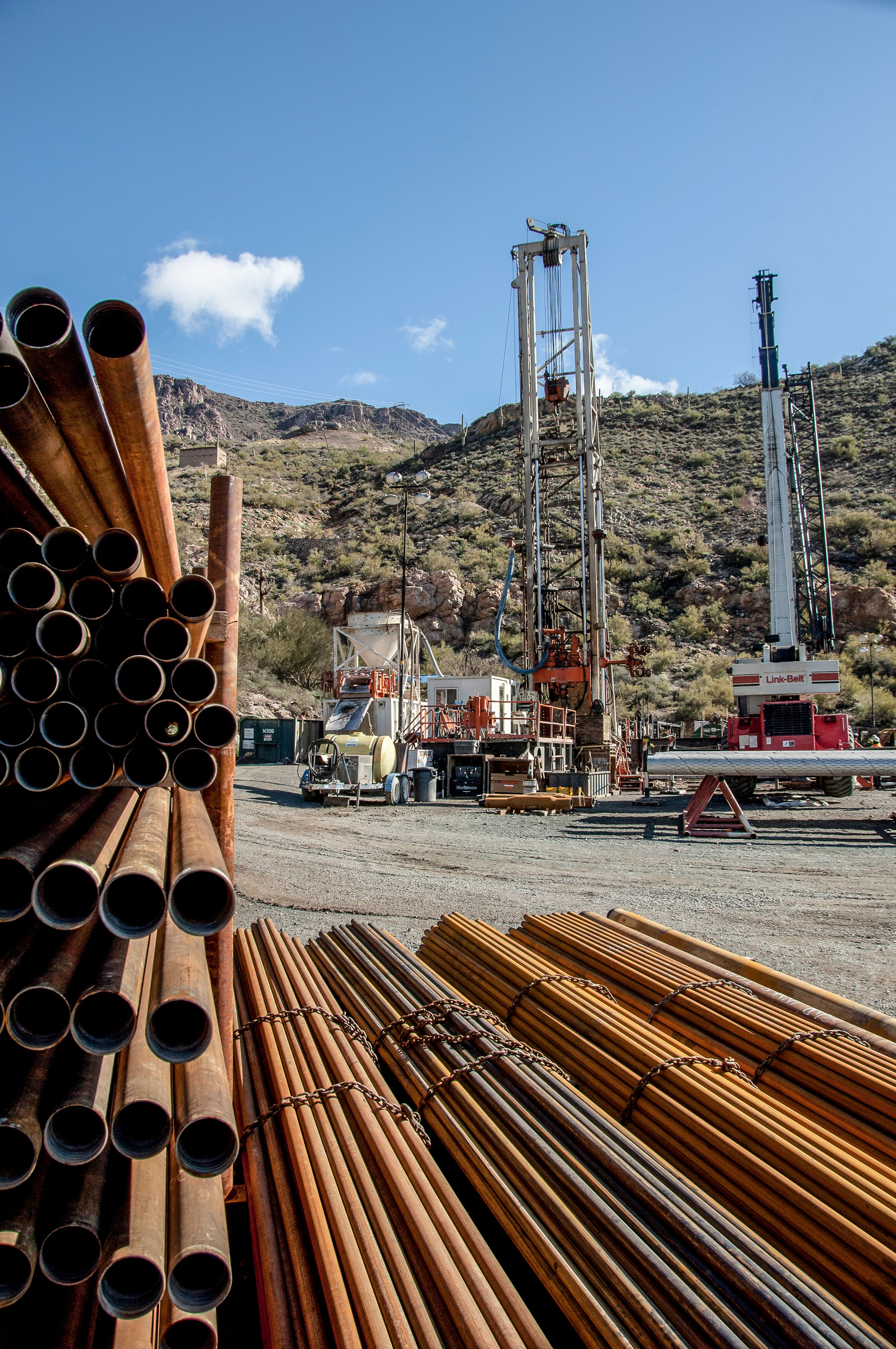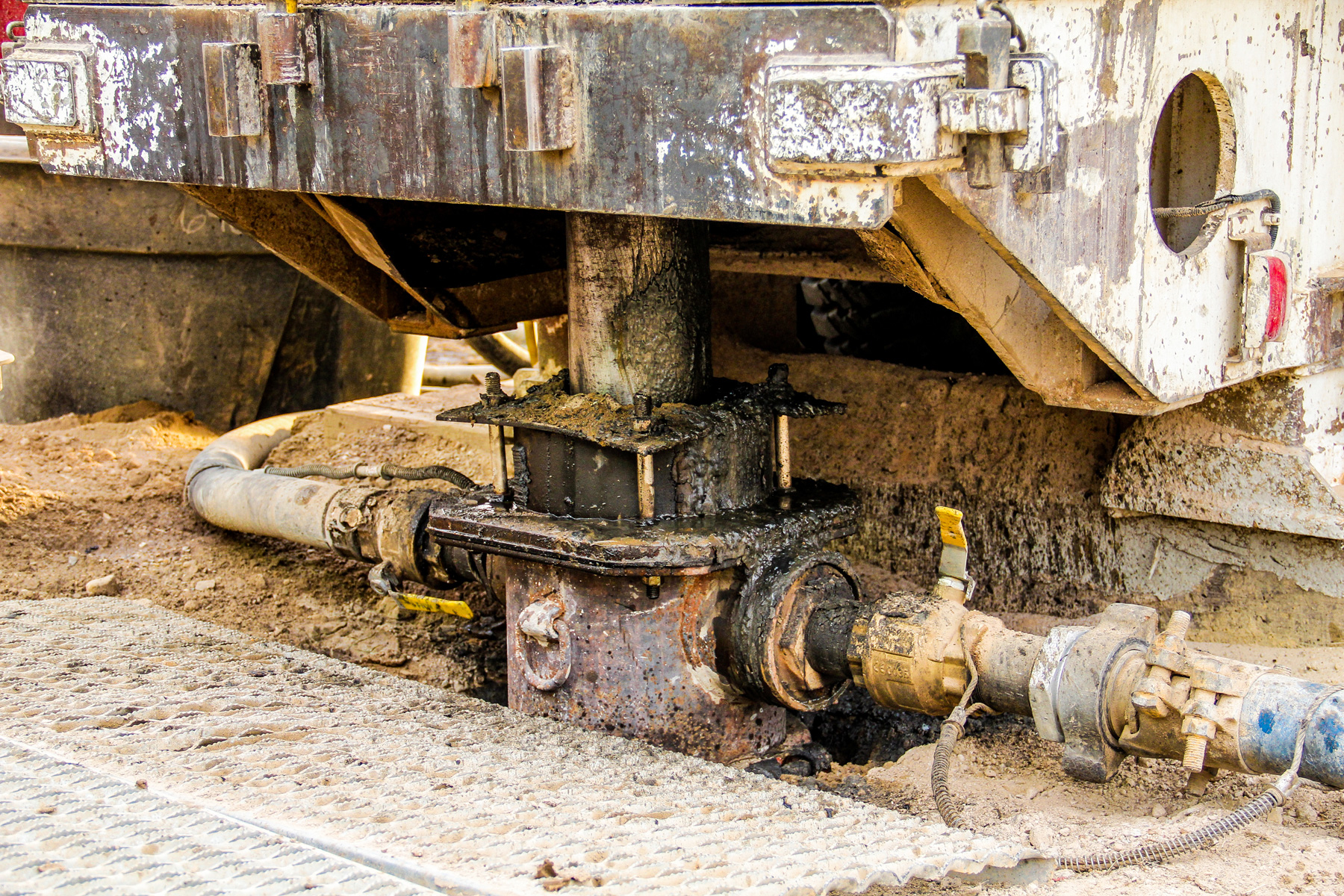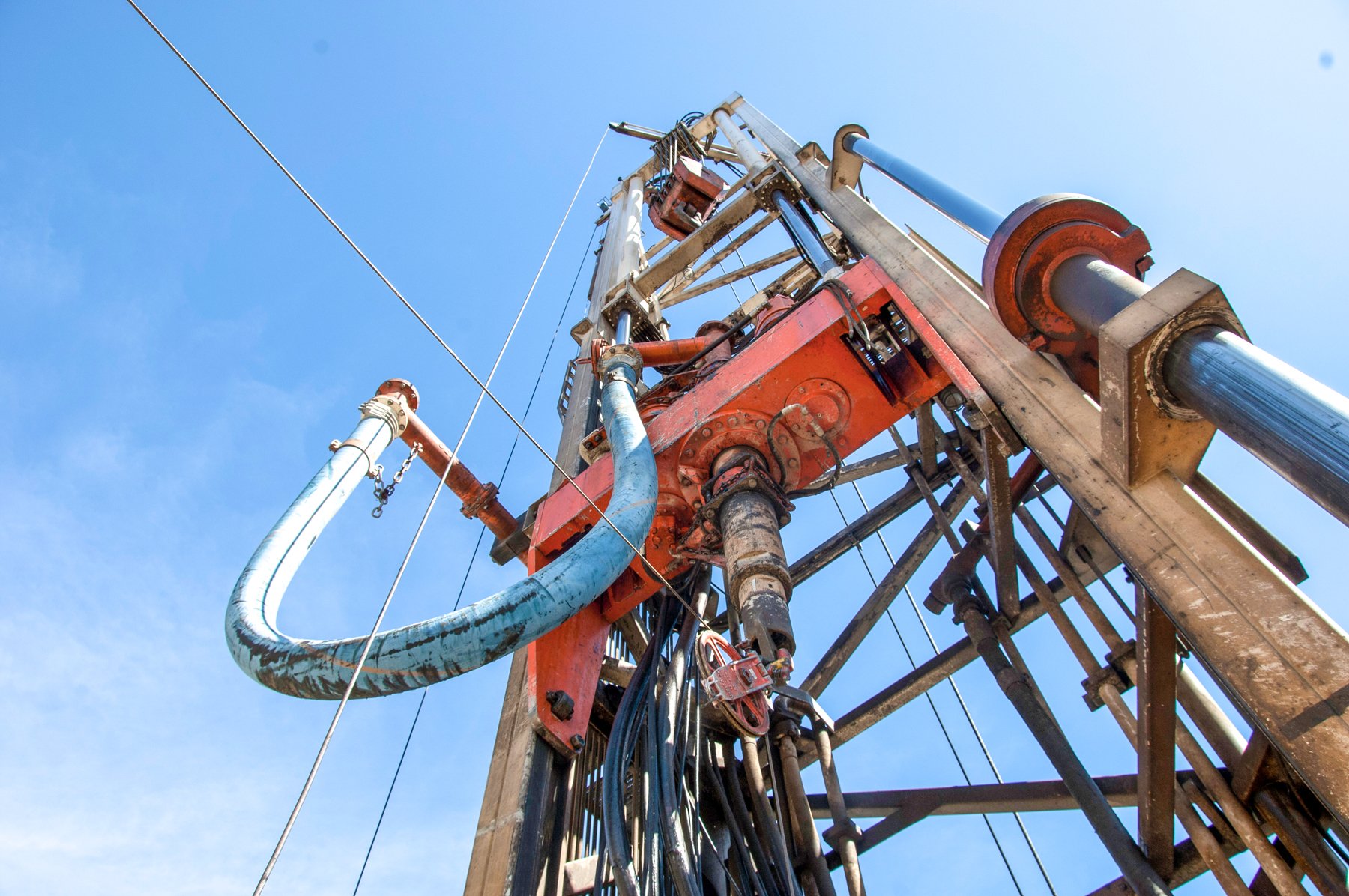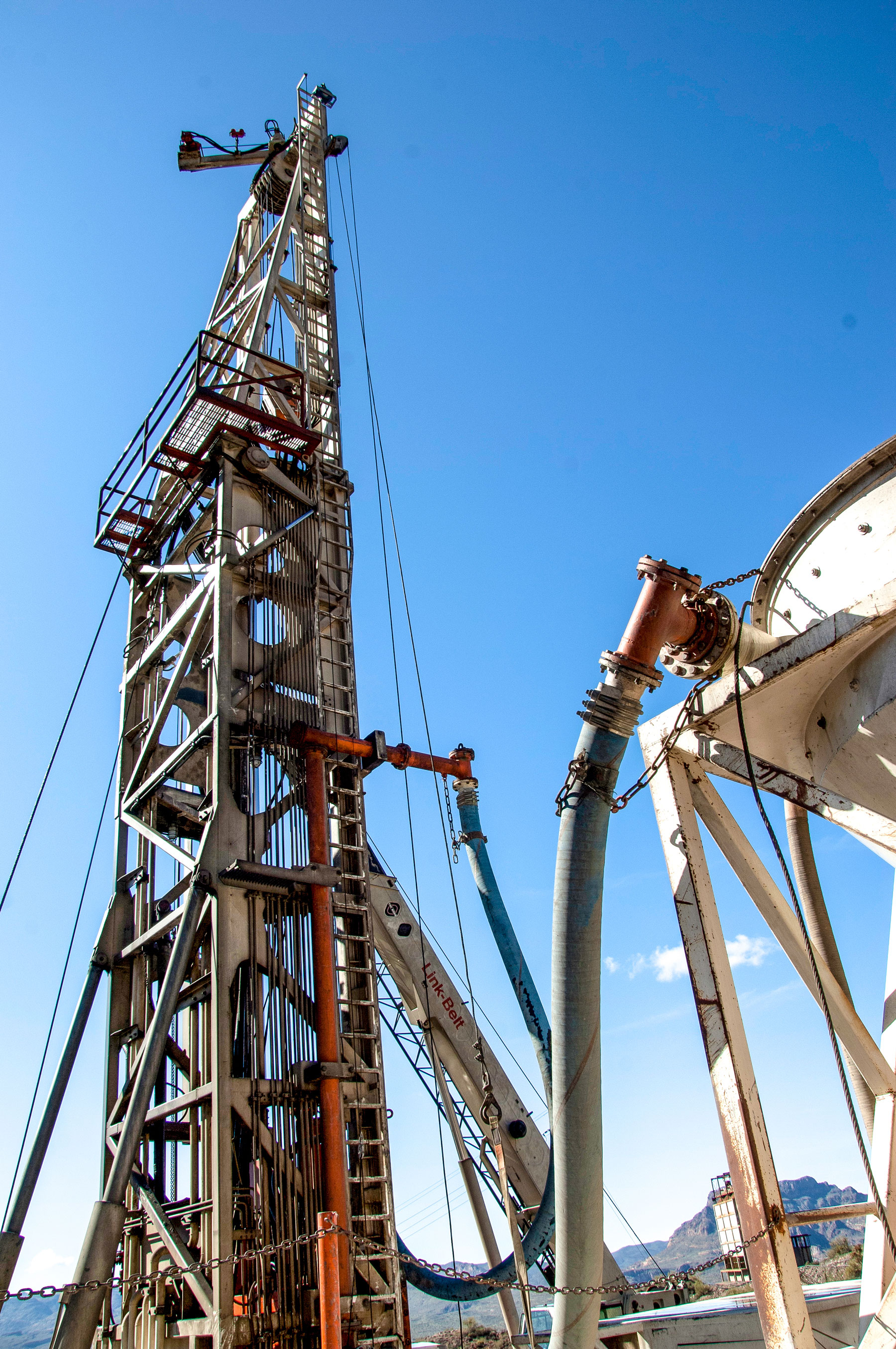NON-MINING
August 14, 2017
How to Drill Large-Diameter Holes Through Lost Circulation Formations In a Single Pass
This article originally appeared in Coal International.
DTFR: DRILL LARGE-DIAMETER HOLES
Dual-tube flooded reverse circulation (DTFR) drilling is gaining increased use in global markets as companies come to better appreciate the many benefits it offers as an alternative to conventional rotary drilling.
In each local market, they’re seeing the results of all that DTFR has to offer, including higher-efficiency wells, high-quality samples and faster well completion. DTFR, which essentially combines the conventional and reverse-circulation methods, has firmly established itself in the U.S. market over 30-plus years of drilling to depths of as much as 10,000 feet.

In Australia, where Boart Longyear began using the technique in 2012, four rigs using the method are already in place, typically reducing the time it takes to drill a 150 meter hole from two weeks down to five days. Similar results can be anticipated in Chile and Africa, where the use of DTFR is still in its early stages.
DTFR can also protect environmentally sensitive areas as well as drill holes as large as 60 inches in diameter in a single pass. A recent application by a drilling crew in Southwest Wyoming offers a good case in point on both fronts.
To create a ventilation shaft for an underground longwall coal mine, the team had just over four weeks to guide a 60-inch bit to a depth of 550 feet through a challenging geological formation that included two aquifers. Even though hampered by project startup delays, the team got it done several days ahead of their deadline.
The DTFR technique allowed the extraordinary bit to penetrate loss circulation zones that precluded the use of a more traditional raised bore rig.
The technique pumps air through the outer tube and forces mud and drill cuttings upward through the center tube, preventing them from plugging porous rock formations with cuttings, a common problem under the high pressure of conventional drilling.

Rotating three-member crews worked around the clock, utilizing a top head drive rig fitted with stabilizers and the massive bit. To minimize the risk of a mine entry collapse, the borehole was drilled off to the side of the mine tunnel and a 54-inch casing with 1/2-inch wall thickness was installed and cemented in place. Underground mine crews then mined over and punched through the concrete to open up the shaft.
Drilling such a large-diameter hole through loss circulation formations in a single pass – and in less than a month and a half – simply would not have been possible using any other method, and few companies have the necessary resources, expertise and experience, not to mention a large enough drill rig table.

Most often used for large-diameter water wells, DTFR is similarly suitable for pre-collar oil & gas and pre-collar geothermal applications as well as ventilation shafts like the one in Wyoming. It is also being used to drill two injection wells in central Utah at the site of the first underground salt cavern natural gas liquids (NGLs) storage facility in the Rocky Mountain region. Other uses include paste holes and utility holes.
Of course, not every application calls for the behemoth bit used at the Wyoming coal mine. Bits come in more than a dozen sizes, ranging from 7-7/8 inches on up, depending on the need.
DTFR can be used in both unconsolidated formations and hard rock formations. While specific tooling depends on the formation and the size of the hole that’s needed, it always entails dual-tube pipe, roller reamers, stabilizers and a skirted bit. This unique setup allows for a straight hole and consistent diameter in a single pass.
Even with flooded reverse, conventional drilling is needed to start the borehole. The surface borehole typically goes to a depth of 20 to 40 feet, where the surface casing is cemented in place.
The completion borehole is also drilled conventionally until submergence is reached, usually about 100 feet below the ground.

From there, the flooded reverse technique takes over, allowing adjustment of the inner tube, lower borehole pressure and the ability to drill through loss circulation zones. A key advantage is that the same rig and rods can be used for both methods, with the switch over simply involving a change of hoses and pumps, as well as the compressors and booster.
Moreover, DTFR drilling never pushes directly down on the bit but always holds back weight, resulting in a pendulum effect. This minimizes deviation of the well, resulting in a straight hole and decreasing wear and tear on the bit, thus increasing longevity.
The DTFR process itself is relatively straightforward. It begins with the use of clean, lower-viscosity mud-based drilling fluid, which is gravity-fed down the outer borehole, or annulus.
The mud collects cuttings from the bit face, mixing with air and flowing to the surface through the center tube much like a common drinking straw. This results in less pressure on the borehole and formation than conventional drilling, which pumps higher-viscosity fluid down the center tube and returns materials up the annulus.
At the surface, the cuttings and mud pass through the cyclone in the mud tank. A series of shaker screens then separates the cuttings from the mud, and de-sander cones separate sand from the drill fluid, which can then be recirculated down the hole.
Because the sample comes up the center pipe rather than the outer edge where it could pick up contaminants, the result is real-time, uncontaminated formation samples that accurately represent the formation at the bit face. This provides exact depth relations for reliable formation analysis.
“Eureka!”
You never know what you might find using DTFR. Several years ago, I was a driller on a crew brought in to drill a 31-inch exploratory hole at a Nevada gold mine dotted with exploration and core holes. But because of the size of the hole we drilled and quality of the samples we obtained, the result was a “Eureka!” moment – we discovered a gold vein the client didn’t know existed.
While the discovery didn’t trigger anything like the California Gold Rush of more than a century and a half ago, it did get the attention of a suddenly attentive and expanded team of geologists and resulted in re-drilling a number of previously disregarded areas.
Of course, not every company will discover gold. But for good reason, more and more are discovering dual-tube flooded reverse-circulation drilling and awaiting “Eureka!” moments of their own.
DISCUSSION
-
is flooded RC 60″, Can we go deep up to a depth of 400 meters?




